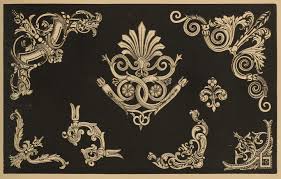 |
| Avoid eccentricity |
Manners for Women by Mrs Humphry
This book of advice by an Edwardian agony aunt was published in 1910, but the cover shows a gentleman and lady in the fashions of about 1900.
Mrs Humphry kicks off with some thoughts about women in general: “Someone has said that woman is one of Nature’s agreeable blunders”. We’ve all heard about her, “from her tight-waisted corset to her love of chocolate creams, from her fear of a mouse or a spider to her terrible strong-mindedness, from her silly frivolity to her disagreeable earnestness”. Yes, a woman’s place was in the wrong in 1900.
But what about the modern girl? “To no one more than herself she is an incomprehensible puzzle. But she is usually healthy minded, and therefore not given unduly to introspection. She is far too well occupied in enjoying herself – riding her bicycle... playing tennis or golf, and making sunshine in her home – to have much time for profitless self-analysis.” So we’ve got to be mindlessly sporty, and a ray of sunshine. I remember that “don’t think about it” diktat from the 1960s.
Mrs H continues to pontificate about the life of today’s girl. Boyfriends are not mentioned. Unlike her mother and grandmother, the modern girl “hardly knows what Berlin wool-work means”. Her existence is “cheery and breezy”. She leads an outdoor life and is pretty manly all round. Jolly dee!
However, and here comes the etiquette, she really ought to be taught to curtsey, and cultivate a tinkling laugh – not to be used at practical jokes, however, which are “detestable”. You can tell a lady when you see her at a concert: she doesn’t turn round to look at anybody. In the street, she doesn’t look back, and she manages to avoid physical contact with others.
Etiquette books usually devote pages to weddings and dinner parties, and this one is no different. White satin and trains really belong at court, not in a church, the author explains interestingly. Debutantes were the last to don this costume to be presented to the Queen, hence the importance of the curtsey. Queen Elizabeth II dropped the ceremony soon after she came to the throne.
In order to marry off your daughter (we seem to have departed from the cheery, breezy modern girl who only thinks about bicycling), she needs to go to lots of dances, and attract enough partners. “The pretty and the rich are sure to get on well in this respect”, she points out in case we hadn't noticed. However, plain girls in shabby dresses should be welcomed, and “It is astonishing what good marriages plain girls often make.”
On the other hand, “the old idea that a woman who remains unmarried is a social failure has long been obsolete”, she asserts mendaciously. Unfortunately, “the supply of husbands is so insufficient”. Eligible bachelors were probably in the Far East, running the Empire. I’m surprised she doesn’t mention the “Fishing Fleet” – the young girls who were chaperoned to India and beyond where they stayed with a friend or relative and had their pick of the officers.
After a diatribe about painful hairpins, tight corsets and pinching shoes, she proclaims: “If we did not dress irrationally, we should be unpleasantly singular. The men who belong to us would call us dowdy.” And if you wear eccentric clothes, you may become eccentric. You get so used to people laughing at you in the street that you may develop “little ways” that put everybody off you. She is irritatingly vague on these distressing habits – could they include campaigning for the vote?
She is more specific on clothes: a widow marrying again may wear “grey, mauve, heliotrope, lavender, biscuit or deep cream”. Bead trimmings are to be avoided at the seaside.
Many pages are devoted to dinners, although “there has been a curious revulsion of late against the slow and tedious two or three hours’ dinner party”. There was a succession of courses, but guests were given menus and could decide in advance which they wanted to accept and which to skip. Also portions were small and it was more like a tasting menu. Dishes were recherché, but you were not supposed to comment on them. She goes into great detail about decorating the table with flowers, bonbon dishes and "smilax", a tropical trailing vine that presumably you bought at a florist's.
Elaborate mourning was still in vogue, and women were discouraged from attending funerals as they were more likely to break down (i.e. cry) and upset the men – who might have ended up weeping too, and that would never do. She points out that the “cultivated classes of English society” were praised for their “cheerful stoicism” by Thomas Carlyle. But after a close relative’s long illness, “there is no strength left to the mourner to resist her grief, and she breaks down pitifully just when she most desires to be calm and composed and to ‘possess her soul’.”
It's not so much an etiquette book as an insight into upper class life of the 1900s, and the perfect present for any Downton Abbey fan.
More here, and links to the rest.

